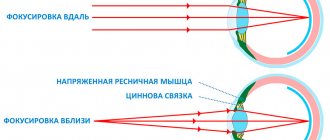Do you perceive the world based on your tactile sensations? Or do you prefer to listen carefully or watch? The way we perceive the world around us has long been the object of study by psychologists and many other scientists.
Everyone has heard at least once in their life about such a concept as a psychotype. People who perceive the world more visually are called visual learners. Those who prefer to try everything by touch are kinesthetic. And those who perceive everything well and remember everything by ear are auditory learners.
These are the most common human psychotypes. But there is another equally important one - discrete or digital. Such a person will rely on logical thinking in everything; rationality and logic in absolutely everything are important to him.
You rarely meet people with the discrete psychotype. Perhaps some of your friends and family members are digital. The only question is how to recognize them and how to communicate with them. Let's figure it out.
How to recognize discrete?
Discrete people are those people who must study all the information received from the outside world and sort it into shelves in a strict order, translate it into diagrams and logical chains.
In everyday life, discretes are very calm and reasonable people, they are pedantic, scrupulous, they do not like displays of feelings and try to communicate strictly to the point; such people are often classified as smart people.
How to understand that the interlocutor is discrete?
A distinctive feature of discretes is that they experience the world not through the senses, but through logic. Discrete resembles a walking computer: it constantly weighs the pros and cons, thinks not about the people themselves, but about the causes and consequences of their behavior.
Discrete individuals have striking distinctive features that make people of this type easy to recognize:
- Dry speech with an abundance of logical connections and conclusions. Discrete likes not to talk about events, but to analyze them. At the same time, he is silent about his feelings and does not even betray them with intonation. But he pays special attention to the facts.
- When choosing any item, he first of all thinks about its functionality and benefits. Discrete will not waste money on a useless thing.
- During a conversation, he prefers not to look his interlocutor in the eyes. However, some discrete people know how to maintain eye contact, but they do this only because it is customary.
- Discrete people do not know how to show insight in communication, so they often seem tactless. But that's not true. It’s just that it’s hard to understand another person using logic, and they’ve learned to ignore their feelings.
- Discretion is almost never the soul of the company. On the contrary, people of this type are often closed and unsociable.
There is an opinion that people are not born with disabilities, they become them under the influence of life conditions, and that there are no children who are children with disabilities.
However, every person is born with already inherent capabilities, which, if the necessary conditions are met, will be developed in the right direction. There are two ways to become discrete:
- of one's own free will,
- as a result of unfavorable living conditions (read about this below).
Who is it
The described concept of digital comes from the English word digital, meaning “digital” or “discrete”.
True discretes are quite rare in reality, since they, like most others, perceive and process information using various analyzers. Therefore, we can only talk about the predominance of this type of perception.
However, there is an opinion that it is incorrect to separate digitals into a separate category along with psychotypes, which is classified in accordance with the prevalence of a particular analyzer. Since logical thinking cannot be classified as a sense organ, it can rather be interpreted as a way of analyzing information.
The digital perception type has a high level of information processing ability. Such people rarely talk about the picturesqueness of something, but they immediately notice the functionality of the product or its benefits. They rarely make eye contact because visual interaction distracts them; the interlocutor’s gaze is “unnecessary” information for digital people.
There are no digitals among children. It is believed that they are not born. Digital makes life.
In addition, there is an opinion that the digital psychotype in question was in the past a kinesthetic person who, due to traumatic events, learned to hide his own feelings, manage preferences, and control emotions. However, today there is no clear position on this issue in psychology. It is also believed that scientific minds, businessmen, and politicians, whose perception begins to be realized with the help of logic, turn into digital people due to circumstances and requirements of the professional sphere.
The digital type always perceives information in any circumstances, classifying it into logical and illogical. At the same time, constant analysis of the surrounding reality through the prism of logic leads to manipulation of other individuals. By exploring those around them, they begin to imitate them. For example, in a situation of interaction with an individual who understands the environment auditorily, discretes can establish interaction with him, using their auditory system of information perception and using words that define an auditory person.
Digital people try to communicate with visuals through images. They interact with kinesthetic learners, talking about personal feelings and their own emotions. However, digitals do this only when they need it. In other situations, discrete individuals are simply not capable of empathy. When uttering stereotyped phrases such as “I know how you feel”, “I understand how you feel now,” they do not empathize, and the phrases themselves sound dry and unemotional. And on the contrary, a digital person begins to think if the stimulus for communication with him is another subject. He seeks to understand not the meaning of what was said, but why he was told it.
How does a person become discrete?
Many children from disadvantaged families, when exposed to unfavorable factors, are forced to become discrete children, and a kind of protective mechanism is triggered.
A child who is not pampered with positive emotions and feelings withdraws into himself and finds peace in the logic of things, which is always present in everything. Subsequently, in adult life, the discrepancies do not change, because, having had a negative experience on an emotional level, they no longer trust people, but believe only in reason and the logical course of things.
Another category of people who become discrete of their own free will are outstanding people, that is, scientists, politicians, businessmen. Such discrete people gradually, over the course of their lives and gain experience, come to the conclusion that it is more convenient for them to live, perceiving everything around them through the prism of logic; these are the so-called smart guys.
Are born or become discrete
Scientists believe that a person becomes discrete under the influence of some life situations during his life. That's why you will never find digital among children. There is an opinion that discrete people are former kinesthetic learners.
Through the influence of some unpleasant and traumatic situations, they began to hide their experiences and feelings not only from other people, but even from themselves.
Between feelings and rationality, discretes will always choose the second. It’s easier for them not to give in to emotions, drowning them out inside themselves. At first, the discrete tries to keep his feelings, movements, and actions under control all the time, then over time this happens unconsciously, “automatically.”
Often, children from dysfunctional families become discrete or digital, where no one could support them, sympathize with them or understand them.
Discretion in the profession
Discrete people not only have a wealth of life experience in various spheres, but are also very educated, which inevitably leads to the perception of life through the construction of analytical conclusions on each issue.
Many of them become discrete due to circumstances or their chosen profession. The best professions for discrete workers:
- Most programmers are discrete because they work with software and not with real people, which leads to a change in thinking.
- Many scientists are also discrete, because scientific research comes first for them, which leads to less expression of emotions and more manifestation of logic.
- Discrete people are the best psychologists due to their rich life experience and analytical mind.
People of Hearing
There are also men who are auditory learners, who perceive the world around them by ear. Take a closer look at him, if he constantly says something, talks to himself, sings in the shower, always listens to music and has good hearing - there is no doubt that he is an auditory learner. Don't forget to listen to his speech, in which he uses phrases such as “Listen to me,” “This man is too noisy,” “Loud words!” etc. If all this takes place, then he is definitely an auditory person who needs to be approached through hearing.
But it must be said that there are much fewer auditory learners than the same kinesthetic and visual learners, but if you are lucky enough to meet an auditory learner, then, for sure, he has a rhythmic voice, he loves not only listening to music, but also singing. This person loves to talk, he can easily learn foreign languages, but from recordings on disks.
How to win the heart of an auditory man through long conversations and conversations, it’s good if you know a lot, because you will have to not only listen to him, but also speak.
If you want to convey some important information to him, and at the same time he must remember it, then tell him this better over the phone, since what is said over the phone will better reach the ears of your lover.
We mentioned above that there are three personality types, but in fact, there is another type that is very, very rare, but still it exists, and we will tell you a little about it, this type is discrete or digital.
How to communicate with a discrete person?
Discrete values honesty most of all in people, so the worst thing you can do is try to deceive such a person. If discreet finds out about this, it will not be easy to justify oneself in his eyes. Also, you should not try to impress a discreet person with a provocative appearance. Most likely, this will confuse him or he will decide that the interlocutor is going to manipulate him.
There is no need to be offended by a discrete person if he does not make eye contact during a conversation. This doesn't mean he's lying or isn't interested in talking. It's just more convenient for him. This is especially difficult for visual learners to understand. However, it is also difficult for kinesthetics to get along with discrete people, since these people do not like touch and do not come close during a conversation. Discrete people appreciate it when other people respect their personal space. This must be taken into account if you want to make a good impression.
Visual, auditory, kinesthetic, discrete - what is it?
Quantity Leave your comment
SHARE
Photo from the gallery “My Sunshine”
These words mean the peculiarities of perception and processing of information by people of different ages.
A visual person is a person who perceives most information through vision.
An auditory person is one who receives basic information through hearing.
A kinesthetic person is someone who perceives information through other senses (smell, touch, etc.) and through movements.
A discrete person is a person who perceives information through logical comprehension, using numbers, signs, and logical arguments. This category of people is the least common, and is usually not typical for children, including schoolchildren.
Such mental characteristics appear already in preschool age and play a big role in establishing contacts between the child and others, in the success of learning, and in acquiring new skills and abilities. How to recognize a person’s leading channel for perceiving and processing information? Often it is enough to observe!
PRESCHOOL AGE
A visual child relies more on visual sensations when perceiving information. He quickly remembers color, shape, size. If you offer your baby a new toy, he will first carefully examine it from all sides. Visual children love to sculpt, draw, cut out, and put together puzzles. Their activities and games involve interaction between their eyes and hands. Such children prefer to look at pictures in a book than to listen to a fairy tale (for example, on an audio cassette or performed by their mother). For a visual child, it is important what he is wearing; he himself chooses the color of tights, dresses, blouses; girls are sensitive to jewelry, hairpins, and bows. The visual child will first remember and tell you who came to kindergarten today, what they wore, and who had the brightest toy on the playground. The visual is quite neat (for its age), for example, it will not get into a puddle, because the shoes will be dirty and ugly. When communicating with peers, a visual child first observes, and only then makes contact (joint play); he can play alone for a long time. When raising a visual child, it is necessary to pay attention to the development of speech (he is taciturn), sociability (the ability to communicate), and physical coordination.
An auditory preschooler learns about the world around him through sounds, so he begins to speak earlier than others and has a large vocabulary. Such kids love to listen to music, fairy tales on audio, and have conversations - discuss, prove. Invents various fairy tales and games. He knows how to convince and persuade. But he doesn’t like to participate in outdoor games.> Auditory children are very sociable. They may be slightly behind their peers in the development of skills related to visual (finding differences in pictures) and motor (the ability to deftly climb a hill, run quickly and for a long time) perception. Therefore, it is worth developing these skills through games and exercises.
A little kinesthetic learner explores the world through touch and movement. His motor skills are well developed, he moves a lot, and usually starts walking early. Such a baby loves active games associated with jumping, running, wrestling, it is difficult for him to sit in one place or do one thing for a long time. A kinesthetic baby loves to touch and feel everything; Tactile sensations are especially important to him, so caress, cuddle, kiss more often, try to use less the phrase “Don’t touch!” beloved by parents.
SCHOOL AGE
Active dictionary.
Visual learners in their speech use nouns, verbs, adjectives related to vision (look, observe, a picture, at first glance, colorful, bright, as you can see...). The auditory language is characterized by words associated with auditory perception (voice, listen, discuss, silent, silence, silent...). The kinesthetic vocabulary mainly includes words that describe feelings, sensations (grasp, soft, warm, silky, touch, good smell, fragrant, flexible...).
Direction of view.
When communicating, visual learners look primarily upward, auditory learners look along the midline, and kinesthetic learners look downward.
Features of attention.
It is generally difficult for a kinesthetic person to concentrate his attention; he is easily distracted by anything; auditory learners are easily distracted by sounds; The noise practically does not interfere with the visual.
Features of memorization.
The visual person remembers what he saw, remembers with pictures (imaginative thinking is well developed). Auditory - what was discussed is remembered by listening. The kinesthetic person remembers the general impression; remembers by moving, feeling, smelling.
Examples of differences in behavior.
Situation: homework that is written on the board.
The visual will obediently open the diary and copy from the board what is assigned to the house. The auditory student will ask his neighbor and write down from hearing or will not write anything at all, and at home he will call on the phone and find out from his classmates what is assigned. The kinesthetic student rummages through his briefcase for a long time, finds the necessary textbooks, the assigned pages in them, and notes directly in the textbooks what is assigned.
Situation: behavior during recess.
The visual student most often stays in the classroom (if it is not very noisy) or goes out into the corridor and looks at the information on the walls, watches other children. The auditory learner uses the break to talk and make noise. A kinesthetic learner needs a change to warm up and move around.
Of course, when teaching and upbringing, it is necessary to take into account the peculiarities of perception and processing of information. This applies to both parents and teachers. It is important to communicate with the child in “his language.”
► Comments will be received better if: for the visual – shake your head, wag your finger; say to the auditory in a whisper “sh-sh-sh”, “quieter”; kinesthetics put your hand on your shoulder.
► When a child is doing homework, it is recommended to: allow the visual student to have a sheet of paper on hand, on which he can draw, hatch, draw, etc. while working; do not make comments to the auditory student when he makes sounds or moves his lips during the process of memorization; kinesthetics do not force one to sit still for a long time, give the opportunity for motor discharge (go to another room, stand up and jump...).
► When communicating, use methods that are understandable and close to the child: with the visual, use words that describe color, shape, location, you can highlight points in the book with color, use tables, diagrams, visual aids; with audio, use voice variations (volume, pauses, intonation); with a kinesthetic learner, use gestures, touches, rather slow speech, let him “play out” the information.
Any person, including a child, uses different channels of perception, that is, we cannot only be visual, for example. Peculiarities of perception also depend on age: young children tend to want to touch and taste everything, while schoolchildren more often use their hearing and vision.
Learn to understand each other, then there will be much fewer problems in your life and in the lives of your children!!!
When preparing the article, I used the book by G. E. Akimova, “How to Help Your Child,” Ekaterinburg: U-Factoria, 2003.
Author of the article: Olga Anisimovich, especially for the portal “Sun” Published on April 29, 2004
Comments on the article , , , — ?
04/24/2005, 10:08
LarAn
Thank you, everything is very specific.
05/16/2005, 20:21
Irina
Thank you very much, this article helped me at the seminar)))
10/11/2005, 15:41
Olga
good article. Thank you.
10.19.2005, 15:15
OLGA
Thank you, you helped me to be convinced of my knowledge about my own child.
03/18/2006, 10:51
Lesya
Finally, something concrete
03/21/2006, 16:30
Oksana
Thank you...very useful information, helps to better understand your children...and most importantly, easy and simple, written in an accessible form (in simple human language)
06/29/2006, 00:19
initial esya
This is true, but, in my opinion, the article is written too categorically. Noise also bothers the visual (judging by myself), just like it does for any normal person. Understanding tables and diagrams depends on other features (eg "logic") rather than on "visuality". It’s the same with puzzles... I never liked them, they are too complex: P PS: In a word, this typology ONLY is not enough for anyone to understand, and you should not take all the information literally.
09.28.2006, 15:41
Oksana.
For the initial Esi. Naturally, both in perception and in character. There are only a few people in their pure form. Usually there are always mixed types. But still, one quality prevails in a person. That’s why each type is described here.
05/19/2007, 15:37
Maxim
Useful information for knowing yourself and others, influencing others.
10.10.2007, 22:58
Irina
Very useful and necessary article. Everything in it is clear. My granddaughter is 4 years old. I now know, or at least I can guess, how to behave in different situations in a relationship with a child. We are all a little visual, auditory, and kinesthetic. But when you know the basic psychological inclination, it is easier to find an approach to the child. Thank you very much.
11/24/2007, 17:24
ALEXANDER
05/02/2008, 02:47
Natalya
Thank you for the article, I found some points very useful for communication between me, a visual learner, and a kinesthetic child.
10/08/2008, 12:18
Margarita
Thank you! Very clear and effective in life!
03/24/2009, 20:13
Alina
Searched for kinesthetic skills after attending a parent meeting. I came across this article. I read it. She is a German language teacher by training. My child is kinesthetic, I am visual. I am concerned about the question: HOW to help a kinesthetic learner learn foreign words???
04/26/2009, 00:14
Lyudmila
After attending a parent meeting at school, I reviewed the test results for my child. But the data from the article and testing do not coincide at all. What should I do?
05.11.2009, 15:07
Julia (busy mother)
The article was written a long time ago, but how relevant it is! I think YOUR site is the BEST! This article is recommended on the Ukrainian forum! Here! I’m sure you don’t even need to look for anything else on the internet. YOU HAVE ALL THE ANSWERS!!!!!
02/21/2010, 12:51
Olga
Thank you very much for the article.
06/14/2010, 17:47
Nyuta
But I’m a visual person and noise really DOESN’T bother me, unlike Yesya. Maybe, after all, it all depends on the “purity of the type”?
02/05/2011, 19:51
Rita
Thank you for the advice about homework. Very useful
05/20/2012, 17:59
Stas
Sorry, but what you all write in the comments is complete nonsense. Sorry, of course, for my directness... But you don’t even have an idea about us! The article is multifaceted, but does not correspond to the maximum logical conclusions and experience of the discrete; it was written by a person unable to understand the true discrete. It's a pity…
09.14.2012, 11:28
Katya
It seems to me that if my parents had read this article. they would have avoided many problems... Does the line between types blur with age? It seems to me that over the years I have only become stronger in my perception. I'm 70 percent visual
05/18/2015, 01:55
Tatyana
Thank you for the article. My daughter is still 100% kinesthetic. Thanks to the article, I understand and accept this.
12/20/2017, 19:34
Angela
Especially when they are small, they are so kinesthetic, kids) When I grew up, I took the test testometrika com/personality-and-temper/you-auditory-visual-or-kinestetik/ just for fun, in case I’m wrong and Sashenka was better at listening by ear than with his eyes, but it turned out to be neither one nor the other - he’s still a kinesthetic learner))))
10.25.2019, 10:33
Meerim
I'm 11 and I'm discreet, I'm crazy
SHARE






